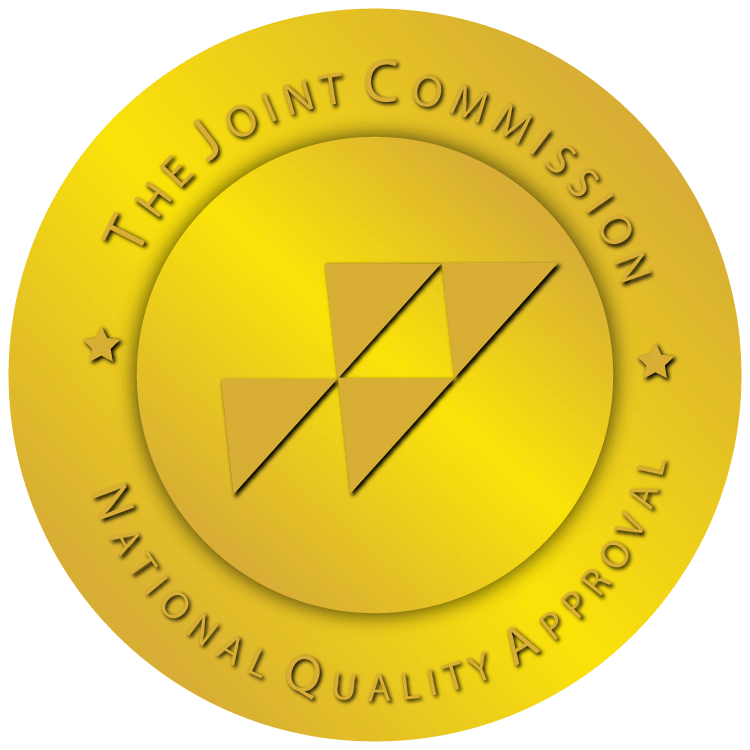
Opioid addiction is a sweeping epidemic that affects more than 2 million Americans each year. The problem has gotten so dire that the United States government has declared the prevalence of opioid addiction to be a national public health emergency.
With opioid addiction squarely in the national spotlight, more people are talking about substance use disorder and recovery. Unfortunately, outdated or ineffective ideas about treatment dominate much of that conversation. It is vital that the national conversation about substance abuse recovery become more educated and nuanced if we hope to see relief from the national opioid addiction problem.
The first step to addressing the opioid epidemic is to analyze the current national conversation about addiction recovery. Next, exploring constructive alternatives to the status quo reveals new solutions to addiction’s toughest questions. Finally, this post will outline how those struggling with addiction and their family members should approach long-term recovery.
Ultimately, the rising rate of opioid addiction and relapse reflects the limitation of one-size-fits-all addiction treatment. Patients need the type of dedicated, long-term recovery that won’t be covered by a week- or even month-long stay in a treatment center. Those struggling with substance abuse require, and deserve, the full continuum of care.
Understanding the Need for Specialized Addiction Treatment
Why have opioid and other drug addictions turned into a national crisis? A fair share of the blame can be pointed at the slow development of recovery strategies. Even worse, many of those struggling with substance abuse disorders have been hesitant about undergoing treatment for years.
These are just a few of the negative side effects of the larger stigma surrounding substance use disorder and the individuals in recovery. Even worse, these cultural ideas about substance abuse and those who struggle with the disorder run deep in our medical field.
The end result? Many still consider addiction treatment to be a fringe element in the health care industry. Many hospitals have no resources for providing an individual with long-term care. Some may even go out of their way to get those suffering from withdrawal or other addiction-related symptoms out of their doors as quickly as possible.
Few modern health professionals have been adequately trained to help patients recover from addiction for good. The aversion toward addiction-related matters has made it even more important for those struggling to get connected with specialized doctors and therapists who want to work with recovering patients.
Historical Attitudes Toward Addiction Recovery Treatment
In addition to a shortage of addiction specialists, negative ideas about drug recovery have also led to a culture of treatment that seeks to get people in and out of care as quickly as possible. Consider how many of today’s substance abuse treatment plans are structured:
Short Inpatient Programs
The most common treatment plans are 30-day inpatient programs, which host the patient for four weeks (or fewer), provide them with medically guided detox, and offer therapy to help guide patients back toward a life of sobriety.
The reality is, however, that most patients will not receive the full level of encouragement, skill training and emotional support they need to avoid relapse in the future. It’s worth pointing out that the 30-day “standard,” while it has its advantages, has risen to prominence according to what most insurance companies cover, not by clinical research.
Outpatient Treatment that Misses the Mark
Also common is outpatient therapy, which offers much of the same educational opportunities as inpatient care but does not provide patients with a safe place to develop a plan for extended recovery.
Many are attracted to this type of treatment because it allows them to continue going to work or school instead of explaining a 30-day absence. While this approach does provide more freedom to the patient as he or she deals with the challenges of recovery, it actually moves further away from the long-term care approach most patients desperately need.
Programs Too Reliant on Medication
Unfortunately, more and more physicians and programs are relying too heavily on medication-assisted treatment (MAT). This approach basically amounts to treating addiction from an office setting by prescribing drugs that offset addiction symptoms. If this approach seems counterproductive, then it is because, for many patients, this strategy creates more problems than it solves.
For some, MAT-only programs mean that they won’t have access to group therapy and they will have limited options for community support. MAT also puts more burden on the patient to control their drug use without providing additional tools or resources. Is it any wonder that this approach may not read to lasting results?
MAT is only effective when part of a larger treatment approach that includes ample therapeutic and supportive services.
Many Americans, especially those with loved ones struggling with addiction, already know that the three strategies we just covered have their limitations. If they didn’t, the country wouldn’t be in the midst of an addiction health crisis. So what does effective health care for substance abuse disorder really look like?
No Quick Fixes: The Need for a Continuum of Care
The most effective, specialized programs have been known to last for years, or at least several months. This strategy allows those in recovery sufficient time to:
- Go through detox
- Receive a medically sound treatment plan from an experienced physician
- Create a network of fellow recovering addicts
- Participate in group and individual therapy
- Identify addiction triggers
- Practice relapse avoidance scenarios
- Develop new skills or hobbies
- Fully repair bodily harm done by having an addict’s lifestyle
The fact of the matter is, however, that insurance companies still recognize the 30-day standard as sufficient treatment for addiction. If patients and their families wish to develop a long-term continuum of care, they can only rely on traditional treatment strategies to do so much.
Outlining the Continuum of Addiction Care
So what does a comprehensive, effective and long-term continuum of care look like? Many stops along this continuum overlap directly with other treatment strategies. The main difference? The idea that rehab is an extended process, not a program to get through as quickly as possible, is what guides patients along a safe and effective continuum of care.
Medical experts recognize treatment as a resource, not the cure itself. Nonetheless, here’s a quick breakdown of a nuanced, long-term addiction recovery plan:
Detox
Most drug addictions cause significant chemical changes in the body. When a patient stops using and begins treatment, this quick shift in body chemistry can result in dangerous (sometimes even deadly) symptoms.
A medically guided detox program ensures that these drugs leave the system safely and that observing physicians can prescribe life-saving medication during this process if necessary. Detox typically takes anywhere from five days to two weeks.
Residential/Inpatient Treatment
Residential or inpatient treatment is synonymous with the standard 30-day model that most of us are used to talking about. More often than not, these facilities have the resources necessary to perform medically guided detox and will do so before admitting a new patient.
Once detox is complete, patients will go through an entire curriculum that lasts the length of their stay and includes many of the treatment strategies mentioned above. In theory, residential treatment is meant to prepare patients for starting a new life of sobriety once their 30-day stay has reached an end.
Extended Care Residential Treatment
Residential inpatient treatment plays an important role in a person’s recovery, but it is only one stop along the continuum of care. Most, if not all, individuals coming out of a 30-day program will struggle to change their entire lives at the drop of a hat.
Old habits are hard to break, especially the daily lifestyle choices that were once associated with drug abuse. An extended residential care program continues the inpatient treatment an individual received during their first 30 days and provides structured opportunities to practice those skills.
Partial Hospitalization (PHP) and Intensive Outpatient (IOP)
Returning to work or school is part of recovery. However, just because a person is ready to get back to the office doesn’t mean that their addiction struggle has come to an end. Partial hospitalization care involves receiving treatment in a recovery house setting, which allows more freedom to patients while they undergo up to 30 hours of therapy each week.
Intensive outpatient care allows patients to move back into their homes while also receiving up to 15 hours of weekly care during the evenings. At this point along the continuum, the needs of the patient will determine the next steps. The more success a patient shows, the further along the continuum of care they can progress.
Long-Term Personal Goal Development
The final step of any recovery program should be for the individual to develop a goal for sobriety. This goal may be related to career development or a personal accomplishment. Others focus on their families and how their recovery can support others or heal a damaged relationship.
Ultimately, those in recovery should develop a long-term personal goal that can only become a reality through sobriety. This goal plays an important role in motivating individuals to stay disciplined and sober, especially if the life skills they learn in recovery help contribute toward their goal.
Essential Long-Term Recovery Strategies
Just because an individual has graduated from sober living care and outpatient treatment does not mean that the battle is over. That’s why the support of family and friends is so critical once a loved one returns home. The continuum of care now depends on their combined efforts.
Here are a few important examples of what the continuum of care will look like once a patient has returned home and started a new life of sobriety:
Family Engagement
Families have two very important roles to play when a loved one returns home from treatment: First and foremost, they must provide a sympathetic support system that encourages the individual to keep fighting when he or she feels overwhelmed. A loving family is great motivation to stay sober.
And second, families must learn to avoid any “enabling” behaviors. Enabling refers to any action or behavior – direct or indirect – that makes it easier for a loved one to keep using drugs or alcohol.
Accountability via Drug Testing
Drug testing can (and should) become part of a family’s weekly or monthly routine. Periodic and random drug tests encourage the family member to stay sober and create opportunities to build trust between family members.
Some may feel a bit uncomfortable overseeing a loved one’s drug test, but this level of accountability is absolutely necessary, especially in the first few months after a loved one has returned home from treatment.
Attending Meetings
Alcohol Anonymous and other meeting groups provide additional resources, accountability and emotional support for those going through recovery. Furthermore, adding a new routine can subconsciously encourage an individual to develop other new lifestyle habits that will help them stay sober.
The most important aspect of these meetings is that there is always one available. Many attend meetings for decades, reinforcing the idea that the continuum of care shouldn’t be limited to 30 days of treatment.
Begin the Continuum of Care Today
Death rates related to addiction in this country are on the rise. Opioid addiction continues to tear families apart. A big part of the problem is that most people aren’t being provided with the help they need. Even worse, families are getting inconsistent information on how they can help guide a loved one into treatment.
That’s why it makes sense to get in touch with addiction recovery specialists as soon as you suspect a loved one is headed down the road to addiction. No one has to do it alone.
Need more information about addiction recovery or have questions about addiction signs and symptoms? Continue exploring our blog for the latest addiction recovery strategies and news.
Learn About Our Extended Care Program
Reviewed by Christopher Schwartfigure MS, LGPC, CAC-AD








